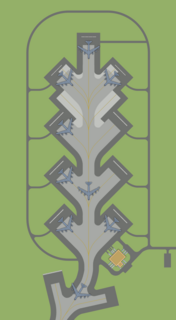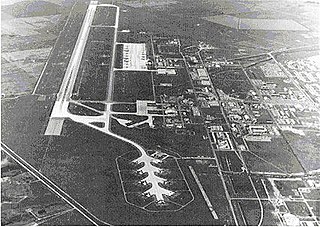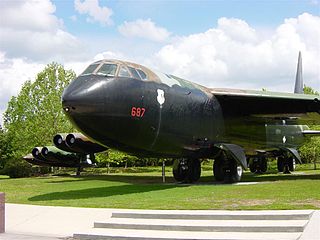
McCoy AFB is a former U.S. Air Force installation located 10 miles (16 km) southeast of Orlando, Florida. It was a training base during World War II. From 1951 to 1975, it was a front line Strategic Air Command (SAC) base during the Cold War and Vietnam War. It was Orlando's biggest employer and economic backbone prior to the opening of Walt Disney World in 1971.

Kincheloe Air Force Base was a U.S. Air Force base during the Cold War. Built in the Upper Peninsula of Michigan in 1943 during World War II, the base was in service until 1977.

The 39th Air Base Wing is a United States Air Force unit assigned to the Third Air Force. It is stationed at Incirlik Air Base, Turkey. The wing is also the host unit at Incirlik.

The 2d Bomb Wing is a United States Air Force unit assigned to the Air Force Global Strike Command and Eighth Air Force. It is stationed at Barksdale Air Force Base, Louisiana. The wing is also the host unit at Barksdale. The wing was assigned to the Air Force Global Strike Command in February 2010 as part of the reassignment of Eighth Air Force.
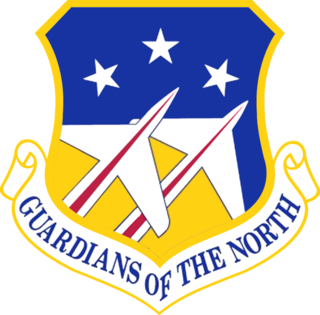
The 85th Group is an inactive United States Air Force organization. Its last assignment was with United States Air Forces in Europe at Naval Air Station Keflavik, Iceland, assigned as a unit of the 48th Fighter Wing whose home station is at RAF Lakenheath, UK. It was inactivated on 28 June 2006.

Royal Air Force (RAF) Podington is a former Royal Air Force station in northern Bedfordshire, England, 6 miles (9.7 km) south-east of Wellingborough, Northamptonshire.
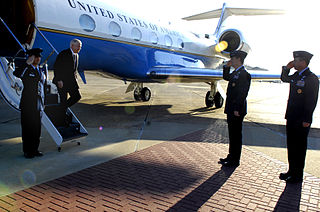
The 42nd Air Base Wing is a United States Air Force unit assigned to Air University of Air Education and Training Command. It is stationed at Maxwell-Gunter Air Force Base, Alabama and is the host unit for Maxwell-Gunter. The wing's primary mission is to support all activities of Air University, the 908th Airlift Wing and other tenant units stationed at Maxwell-Gunter.

The 416th Air Expeditionary Wing (AEW) is a provisional unit assigned to the Air Combat Command of the United States Air Force to activate or inactivate as needed.
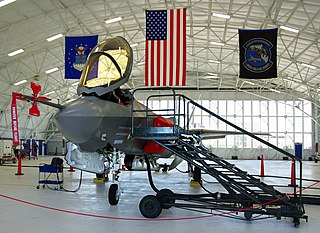
The 46th Test Wing is an inactive wing of the United States Air Force last based at Eglin Air Force Base, Florida. The wing's 46th Test Group was a tenant unit at Holloman Air Force Base, New Mexico.

The 822d Air Division is an inactive United States Air Force organization. Its last assignment was with Strategic Air Command (SAC) at Turner Air Force Base, Georgia, where it was inactivated on 2 September 1966.
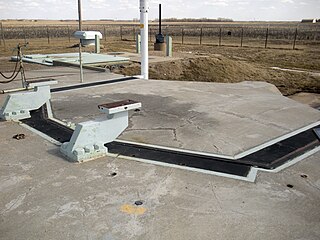
The 810th Strategic Aerospace Division is an inactive United States Air Force organization. Its last assignment was with Strategic Air Command (SAC), assigned to Fifteenth Air Force at Minot Air Force Base, North Dakota, where it was inactivated on 30 June 1971.

The 905th Air Refueling Squadron is an inactive United States Air Force unit. It was last active as an element of the 319th Air Refueling Wing at Grand Forks Air Force Base, North Dakota, where it operated Boeing KC-135 Stratotanker aircraft. The squadron was inactivated at the end of 2010 when the 319th wing lost its operational mission and became the 319th Air Base Wing.

Dalhart Army Air Base is a former World War II military airfield complex near the city of Dalhart, Texas. It operated three training sites for the United States Army Air Forces from 1943 until 1945.

The 46th Bomb Squadron is an inactive United States Air Force unit. It was last assigned to the 319th Operations Group at Grand Forks Air Force Base, North Dakota, where it was inactivated on 16 July 1994.
An alert crew is a term used in the armed forces, most often in military aviation and in land-based missile forces, where members of their units and formations, will maintain a level of combat readiness as a group of persons. Although it sometimes encompasses the entire unit, today the term is more used for a set group of individuals.
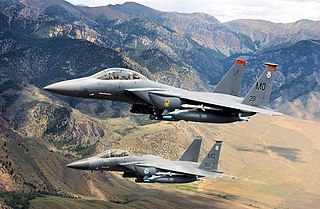
Mountain Home Air Force Base is a United States Air Force installation in the western United States. Located in southwestern Idaho in Elmore County, the base is twelve miles (20 km) southwest of Mountain Home, which is forty miles (65 km) southeast of Boise via Interstate 84. The base is also used by the Republic of Singapore Air Force, which has a detachment of F-15SG fighters on long term assignment to the base. They undergo training in combat tactics by U.S. airmen.
